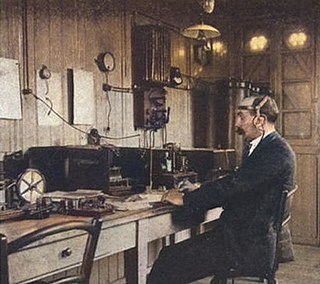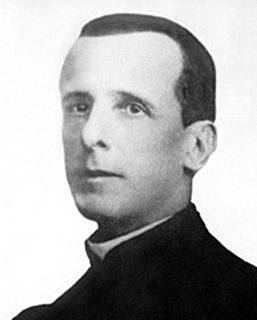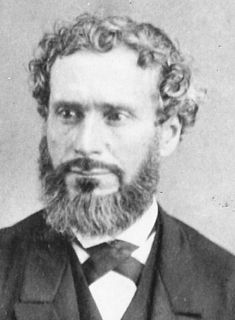
Samuel Finley Breese Morse was an American inventor and painter. After having established his reputation as a portrait painter, in his middle age Morse contributed to the invention of a single-wire telegraph system based on European telegraphs. He was a co-developer of Morse code and helped to develop the commercial use of telegraphy.
Electrical phenomena are commonplace and unusual events that can be observed and that illuminate the principles of the physics of electricity and are explained by them. Electrical phenomena are a somewhat arbitrary division of electromagnetic phenomena.

Elisha Gray was an American electrical engineer who co-founded the Western Electric Manufacturing Company. Gray is best known for his development of a telephone prototype in 1876 in Highland Park, Illinois. Some recent authors have argued that Gray should be considered the true inventor of the telephone because Alexander Graham Bell allegedly stole the idea of the liquid transmitter from him. Although Gray had been using liquid transmitters in his telephone experiments for more than two years previously, Bell's telephone patent was upheld in numerous court decisions.

Alexander Bain was a Scottish inventor and engineer who was first to invent and patent the electric clock. He invented the Telegraph Clock, which was a technology of synchronizing many electric clocks placed anywhere in the world; they would all have the exact same time. He also invented and patented the technology of the facsimile machine for scanning images and transmitting them across telegraph lines hundreds of miles away.

Sir William Fothergill Cooke was an English inventor. He was, with Charles Wheatstone, the co-inventor of the Cooke-Wheatstone electrical telegraph, which was patented in May 1837. Together with John Lewis Ricardo he founded the Electric Telegraph Company, the world's first public telegraph company, in 1846. He was knighted in 1869.
Sufficiency of disclosure or enablement is a patent law requirement according to which a patent application must disclose a claimed invention in sufficient detail for the notional person skilled in the art to carry out that claimed invention. The requirement is fundamental to patent law: a monopoly is granted for a given period of time in exchange for a disclosure to the public how to make or practice the invention.

The invention of the telephone was the culmination of work done by many individuals, and led to an array of lawsuits relating to the patent claims of several individuals and numerous companies.
Parker v. Flook, 437 U.S. 584 (1978), was a 1978 United States Supreme Court decision that ruled that an invention that departs from the prior art only in its use of a mathematical algorithm is patent eligible only if there is some other "inventive concept in its application." The algorithm itself must be considered as if it were part of the prior art, and the claim must be considered as a whole. The case was argued on April 25, 1978 and was decided June 22, 1978. This case is the second member of the Supreme Court's patent-eligibility trilogy.

The invention of radio communication spanned many decades of establishing theoretical underpinnings, discovery and experimental investigation of radio waves, and engineering and technical developments related to their transmission and detection. This scientific work preceded Guglielmo Marconi's use of radio waves in a wireless communication system.

Hot blast refers to the preheating of air blown into a blast furnace or other metallurgical process. As this considerably reduced the fuel consumed, hot blast was one of the most important technologies developed during the Industrial Revolution. Hot blast also allowed higher furnace temperatures, which increased the capacity of furnaces.

The carbon microphone, also known as carbon button microphone, button microphone, or carbon transmitter, is a type of microphone, a transducer that converts sound to an electrical audio signal. It consists of two metal plates separated by granules of carbon. One plate is very thin and faces toward the speaking person, acting as a diaphragm. Sound waves striking the diaphragm cause it to vibrate, exerting a varying pressure on the granules, which in turn changes the electrical resistance between the plates. Higher pressure lowers the resistance as the granules are pushed closer together. A steady direct current is passed between the plates through the granules. The varying resistance results in a modulation of the current, creating a varying electric current that reproduces the varying pressure of the sound wave. In telephony, this undulating current is directly passed through the telephone wires to the central office. In public address systems it is amplified by an audio amplifier. The frequency response of most carbon microphones, however, are limited to a narrow range, and the device produces significant electrical noise.

Father Roberto Landell de Moura, commonly known as Roberto Landell, was a Brazilian Roman Catholic priest and inventor. He is best known for his work developing long-distance audio transmissions, using a variety of technologies, including an improved megaphone device, photophone and radio signals.

This history of the telephone chronicles the development of the electrical telephone, and includes a brief overview of its predecessors.

Charles Grafton Page was an American electrical experimenter and inventor, physician, patent examiner, patent advocate, and professor of chemistry.
In United States patent law, the machine-or-transformation test is a test of patent eligibility under which a claim to a process qualifies for consideration if it (1) is implemented by a particular machine in a non-conventional and non-trivial manner or (2) transforms an article from one state to another.
Neilson v Harford (1841) 151 ER 1266 is a 19th-century English patent law decision that several United States Supreme Court patent law opinions rely upon as authority. The question, as Baron Alderson posed it, was “[W]here is the difference between claiming a principle, which is to be carried into effect any way you will, and claiming a mere principle?” The answer, as the opinions of the various courts that have considered the matter develop, is nowhere.

The United States provided many inventions in the time from the Colonial Period to the Gilded Age, which were achieved by inventors who were either native-born or naturalized citizens of the United States. Copyright protection secures a person's right to his or her first-to-invent claim of the original invention in question, highlighted in Article I, Section 8, Clause 8 of the United States Constitution, which gives the following enumerated power to the United States Congress:
To promote the Progress of Science and useful Arts, by securing for limited Times to Authors and Inventors the exclusive Right to their respective Writings and Discoveries.
Rubber-Tip Pencil Co. v. Howard, 87 U.S. 498 (1874), is an 1874 decision of the United States Supreme Court concerning the patent eligibility of abstract ideas. As explained below in the Subsequent developments section, it is intermediate in the development of that aspect of patent law from Neilson v Harford, through O'Reilly v. Morse, to Funk Bros. Seed Co. v. Kalo Inoculant Co., and then to Parker v. Flook, Mayo Collaborative Servs. v. Prometheus Labs., Inc., and Alice Corp. v. CLS Bank Int'l.
Le Roy v. Tatham, 55 U.S. 156 (1852), is a decision of the United States Supreme Court holding that a principle in the abstract cannot be patented, and no one can claim in it an exclusive right. The inventors had discovered the principle that hot, but congealed, lead under pressure would re-unite as an unbroken solid material, which permitted manufacture of a superior lead pipe. The apparatus to make lead pipe was old and obvious: the inventors, by making slight changes in the old machinery to provide sufficient heat and pressure to remelt the lead, in effect, invented a new use of an old machine. The claim was to the old or obvious apparatus "when used to form pipes of metal under heat and pressure in the manner set forth or in any other manner substantially the same." It was not lawful to patent the old apparatus again, however used, so that the patent amounted to an attempt to patent the principle. That made the patent invalid.

















